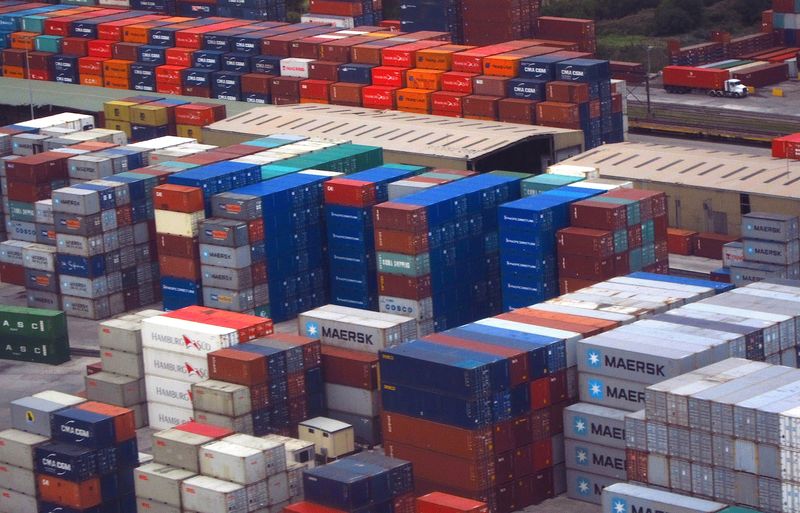By Wayne Cole
SYDNEY (Reuters) - Australia's trade performance last quarter was much less of a drag on the economy than first thought implying upside risk for growth, even as imports outstripped exports and hefty dividend payments flowed offshore.
Data from the Australian Bureau of Statistics on Tuesday showed the current account surplus narrowed to A$12.7 billion ($9.22 billion), from A$22 billion in the third quarter.
Yet net exports trimmed only 0.2 percentage points from gross domestic product in the quarter, when analysts had looked for a 1.0 percentage point hit.
Government spending was also a minor drag in the quarter but that was more than offset by a big rise in firms' inventories, leaving analysts bullish on growth.
"Net exports represent a much smaller drag on growth in Q4 than anticipated," said Andrew Hanlan, a senior economist at Westpac. "Our Q4 GDP forecast is upgraded from 2.8% qtr to 3.3%qtr."
Figures for fourth-quarter GDP are due on Wednesday and the median forecast had already been for a hefty rise of 3% as consumer demand surged back from coronavirus lockdowns.
The brisk recovery shows every sign of continuing with retail sales jumping in January and banks reporting healthy spending on their cards through February.
That resilience supports the Reserve Bank of Australia's (RBA) optimistic outlook on growth as it holds its monthly policy meeting on Tuesday.
The central bank is considered certain to keep interest rates at 0.1% and reiterate it will be patient on hiking as it waits for a long-desired pick up in wages growth.
RBA Governor Philip Lowe has said it was plausible a first rate rise could come later this year if the economy continues to recover, while markets are pricing in a move as early as July.
The Russian invasion of Ukraine has added geopolitical uncertainty to the mix, and combined with massive floods in New South Wales and Queensland to darken the public mood.
An ANZ survey of consumers out on Tuesday showed a sharp drop in sentiment last week, while inflation expectations ran at a seven-year high of 5.3% as petrol prices hit record peaks.
The heat also seems to be coming out of the housing market with prices in Sydney falling in February for the first time in 17 months, though the shift to the country continues apace.

Figures from property consultant CoreLogic showed national home prices rose 0.6% in February, almost half the 1.1% jump seen in January. Values in Sydney dipped 0.1% and Melbourne went flat, hurt by a rush of supply and higher mortgage rates.
($1 = 1.3782 Australian dollars)